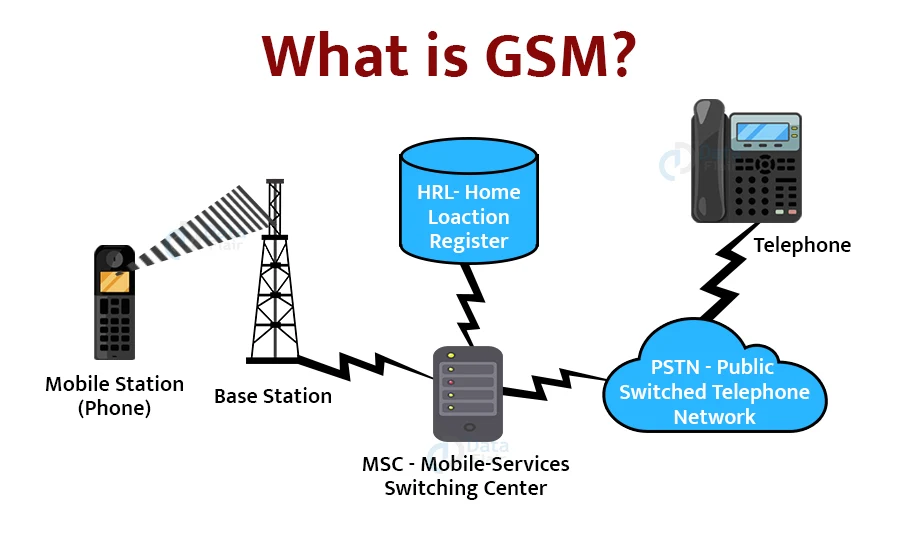Global System for Mobile Communications, or GSMA, is a global organization that represents the interests of mobile operators worldwide. It was founded in 1984 as Groupe Spéciale Mobile Association. The main goal of GSMA is to promote innovation and cooperation in the mobile industry.
GSM (Global System for Mobile Communications) is a digital mobile network standard that is widely used for mobile phone communication. It was developed by the European Telecommunications Standards Institute (ETSI) in the 1980s and became the dominant standard for mobile communication worldwide.

What is GSM and its full form?
GSM is an abbreviation for Global System for Mobile Communications and is a cellular technology that is digital. It is used for transmitting mobile voice and data services. It is the most widely used cell phone standard in the world, with over 90% of the global market share.
Historical Development
GSM was first introduced in Finland in 1991. At the time, it was called Groupe Spécial Mobile and was only used by a few thousand people. In 1992, it was made available to the public in Germany. From there, it began to spread throughout Europe. It wasn’t until 1999 that GSM became available in the United States. Global System for Mobile Communications has come a long way since its humble beginnings. Today, GSM is the most widely used mobile communications standard in the world. There are over four billion GSM subscribers worldwide. That’s more than half of all mobile phone users!
GSM is a Global Standard
One of the things that makes GSM so popular is that it’s a global standard. This means that GSM phones can be used anywhere in the world. They will work on any GSM network, regardless of the country or region. This also means that you don’t have to worry about changing your phone when you travel abroad. Just switch to a local SIM card and you’ll be able to use your phone as usual.
How Does GSM Work?
GSM uses a technology called Time Division Multiple Access (TDMA). TDMA is a digital radio technology that allows multiple users to share the same radio frequency by dividing it into time slots. Each user is assigned a different time slot. This allows multiple users to share the same frequency without interfering with each other. GSM also uses a technology called Frequency Division Multiple Access (FDMA). FDMA is similar to TDMA, but it divides the radiofrequency into different channels instead of time slots. Both technologies are used together to provide GSM users with high-quality voice service. Data Services In addition to voice services, GSM also supports a variety of data services. These include text messaging, picture messaging, and Internet access. GSM text messages are sent using the Short Message Service (SMS). SMS is a technology that allows text messages to be sent over the GSM network.
Key Features of GSM
- Digital Technology: GSM uses digital signals for voice and data transmission, offering better quality and security than analog systems.
- SIM Card-Based System: GSM phones operate using a SIM (Subscriber Identity Module) card, which allows users to switch devices without changing their phone number.
- International Roaming: GSM enables users to access mobile networks in different countries, making it ideal for global travel.
- Frequency Bands: Operates in multiple frequency bands such as 900 MHz, 1800 MHz, and 1900 MHz.
- Data Services: Supports services like SMS (Short Message Service), MMS (Multimedia Messaging Service), and GPRS (General Packet Radio Service) for internet access.
- Secure Communication: Uses encryption to protect calls and messages from unauthorized access.
FAQs
What are the compositions of GSM?
The GSM mainly has four parts, the Mobile Station (MS), Base Station Controller (BSC), Network Switching Center (NSC), and the Operation and Maintenance System (OMS). The MS is physical equipment, such as a phone or modem. The BSC controls the radio resources within a certain area. The NSC connects to other networks, such as the Public Switched Telephone Network (PSTN). The OMS includes a variety of systems, such as billing and customer support. Global System for Mobile Communications has come a long way since its humble beginnings. Today, GSM is the most widely used mobile communications standard in the world. There are over four billion GSM subscribers worldwide. That’s more than half of all mobile phone users!
Advantages of GSM?
- High-quality voice transmission.
- Secure communication with encryption.
- Wide network coverage across the world.
- Cost-effective and energy-efficient mobile devices.